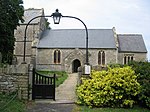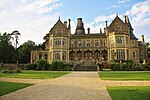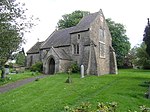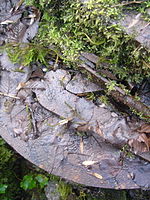Orchardleigh (also spelled Orchardlea) is a country estate in Somerset, approximately two miles north of Frome, and on the southern edge of the village of Lullington. The privately held estate comprises a Victorian country house, the Orchardleigh Lake with its island church, and an 18-hole golf course.
Orchardleigh is available for weddings and other events. Various accommodation is provided, both in the house itself and at adjacent lodges and cottages in the extensive grounds.
Within the old estate are the Orchardleigh Stones, a probable neolithic burial chamber which was excavated in 1803 and 1804, when human bones and cremation urns were discovered.The Church of St Mary, Orchardlea, dates from the 13th century and is Grade I listed. The churchyard contains the grave of the poet Sir Henry Newbolt. The Gloucester Lodge gatehouse was built in the early 19th century.The parish was part of the hundred of Frome.The old Orchardleigh House was just south of the church. Its heyday was the time of Sir Thomas Champneys, 1st Baronet, High Sheriff of Somerset in 1775, but all that remains of that period is the boathouse, rotunda, the Lullington gateway, and the Tudor lodges dating from the 1820s. The old house was demolished and the present one built in 1856 by Thomas Henry Wyatt for William Duckworth. The new house is described by Pevsner as "picturesque, irregular, and in a mixed Elizabethan style", and is a Grade II* listed building.The estate is listed at grade II* on the Register of Parks and Gardens of Special Historic Interest in England.












